

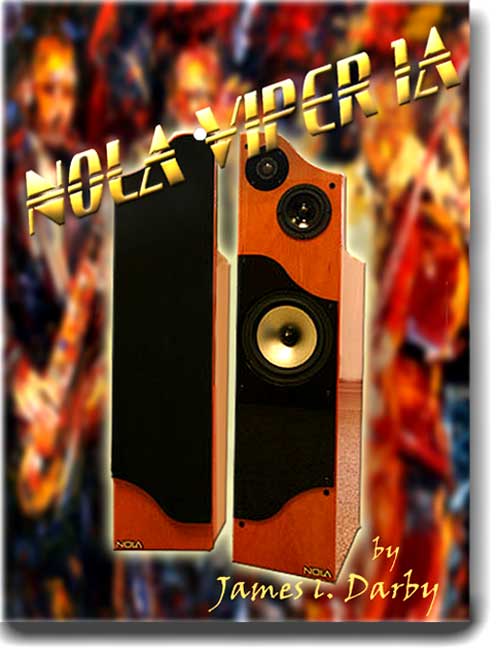
PRICE: $4,000 per pair
Two stately, elderly gentlemen were seated on a bench at the edge of the quaint New England town square at sunset in early summer. One of them was listening to the lovely sound of the choir rehearsing in the small church nearby. The other was focused on the song of a hundred crickets wafting from the nearby park. The first gentleman, listening to the choir said, “Have you ever heard a more heavenly sound?”, to which his friend, enraptured by the crickets, replied, “No…and to think they make it by rubbing their legs together..”.
Not exactly a knee splapper, but there are some audio parallels to be gleaned from this story. Two people, even professional reviewers with years of experience, can be at the same place at the same time, listening to the same system and come away with two very different opinions. Not everybody listens to or for the same audio qualities. That's why you can read a review, then go and listen or buy the thing and have a completely different take on it. The vast majority of reader letters we get from readers say something like, "Hey! I bought the ________ you reviewed and they are everything you said and more! Thanks!". But once in a great while we'll get something opposite.
The same holds true for people who design and build audio components and speakers, too. Not every designer or engineer has the same priorities when it comes to voicing their product. Some prefer ultra detail, others solid bass, others cherish big dynamics and others train their attention on the midrange. That is why we try to pick the brains of the people behind the products we review, so both the reviewer and the reader know what they had in mind when they conceived it. What was most important to him and perhaps more importantly, how was the product designed to be used in a system. If a speaker, for instance, is designed to be used near a back wall in a small room and the reviewer, not knowing any better, sets it up way out from the back wall in a large room, the product is not going to perform well. If a reviewer has an inefficient pair of speakers and tries to evaluate an eleven watt amp, there might be a problem. Also (and this is a big one), all products need a period of break in or burn in. Good manufacturers state what the period is in their manuals, but you'd be surprised how many reviewers never read the manuals. Or even talk to the designers.
This is our second review of a Nola speaker. The first was by our Senior Canadian Editor, Clark Hertz of the $12,000/pr Viper Reference. Carl Marchisotto,the man behind Nola (as well as his wife Marilyn), told me he had a new model and asked if we would review it. I told him we would we consider it an honor.
The new model is called the Viper 1A and it is their least expensive model in a line that goes up to $145,000 for the magnificent Grand Reference IV.1, pictured below.
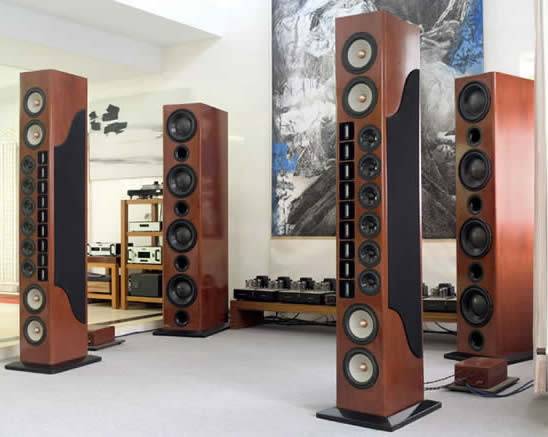
Carl tells us that the Viper IA benefits from a trickle down design from the Grand Ref’s cast frame aluminum cone drivers. This version is a 110 mm, tri-laminate while the tweeter is a 1" aluminum alloy dipole dome. The new midrange driver created for the Viper IA also utilizes a tri-laminate cone and cast frame, this time a 220mm (about 8 ½”) size.

The crossover, which has been upgraded from the former model, is a two-board scheme designed for bi-wiring. (That means if you own these, you should absolutely be using a bi-wire cable configuration). The designer told me that all capacitors for crossovers are listened to before assembly in order to ensure consistent quality. Like the capacitors for Viper Reference, Baby Grand, Pegasus and Grand Reference are also selected to match within 1 part in 1000. That’s not something you hear every day. All tests were conducted using Kimber’s top of the line Bifocal (Bi-wire) Select cable.
The beautiful deep-lacquered Piano Cherry cabinets stand 40” high and 15” deep, weighing in at an impressive 70 lbs each. Frequency response is said to go from 38Hz up to 25,000. The nominal 8 ohm impedance which never goes below 6 should make them an easy load for amplifiers which Carl says need be 10 watts or more.
Since this is our second review of speakers designed and made by Mr. Marchisotto, I thought it would be interesting to learn more about him in his own words;
“Basically I was always into music. I studied piano for 12 years as a youngster”, Carl told me. “My mother used to take me to the Metropolitan Opera to hear Franco Corelli when I was a kid. I can still remember that sound at the “old” Met. In high school I became interested in HI FI. I built my first speaker then. It was a 2-way design using a 12 inch Stentorian woofer and two Wharfdale super 3 cone tweeters. The woofer was actually a coax with built-in horn tweeter. I decided the top end was harsh so I disconnected the horn and substituted 3 inch cones. The crossover was very simple – a single coil and a single capacitor as I did not know much about crossovers. The 12 inch drivers where installed in 12 cubic foot bass reflex enclosures and the tweeters were mounted separately outside the bass enclosure. The 12 inch drivers utilized 11 ½ lb Alcomax (Alnico) magnet structures. They were driven by a Pilot SA260 tube amp. Interestingly, I still have the Pilot and the Stentorians. I have installed some modern caps in the Pilot along with KT77 output tubes-and it still sounds great-more than 50 years later”.
In the 60’s, he worked at Fairchild Camera and Instrument as an engineer where he met a mechanical engineer who years later left with him to start their own electronics business. “I developed a ‘guitar sustainer’ and we sold them to Gibson Guitar. After a few years in the musical electronics industry, I still felt I wanted to work on loudspeakers for better music reproduction”.
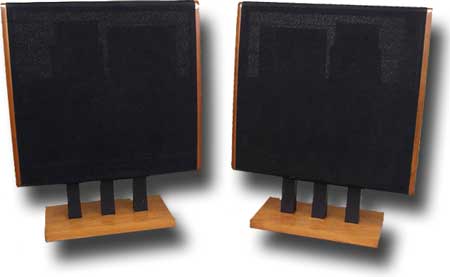 In the mid 70’s, Carl met Jon Dahlquist, famous for his innovative DQ-10’s (left) which I happen to have owned around that time. They were the very first time-aligned speaker. I drove ‘em with my Phase Linear 400 amp. Ah…memories. Dahlquist hired Carl as Chief Engineer where he stayed for 15 years. “Jon had a tragic accident and the company was sold. It was at that point Marilyn and I started Acarian Systems to design loudspeakers under the Alon brand”, Carl stated. “In 2004, Marilyn and I started Accent Speaker to design loudspeakers under the NOLA name - this time free of any partners. With NOLA, we have been able to produce new designs with a greater degree of attention to important details than ever before”.
In the mid 70’s, Carl met Jon Dahlquist, famous for his innovative DQ-10’s (left) which I happen to have owned around that time. They were the very first time-aligned speaker. I drove ‘em with my Phase Linear 400 amp. Ah…memories. Dahlquist hired Carl as Chief Engineer where he stayed for 15 years. “Jon had a tragic accident and the company was sold. It was at that point Marilyn and I started Acarian Systems to design loudspeakers under the Alon brand”, Carl stated. “In 2004, Marilyn and I started Accent Speaker to design loudspeakers under the NOLA name - this time free of any partners. With NOLA, we have been able to produce new designs with a greater degree of attention to important details than ever before”.
The Viper IA’s (and all Nola’s) are different than most speakers in that they employ a design known as “open baffle” – at least for everything from the mids up. That means that the drivers are not enclosed at all; they operate in free space. Since Carl is much more of an expert in that area than I, I asked him to explain why he uses the open baffle. “We prefer the “open baffle” design for several reasons. Our major goal with NOLA is to produce the same “experience” for the listener that “live” music does. Most speakers are built on the enclosed box concept where drivers radiate from the front and the rear radiation from the cones is absorbed inside the box. In the middle frequencies it is our feeling that this design runs into several problems that cannot be solved and hence militates against producing a "natural sound". In order to be accurate, mid range drivers utilize relatively light, thin cones. This type of cone, while capable of producing a natural sound in free space, nevertheless sounds unnatural when mounted in an enclosed box. We all know how difficult it can be to satisfactorily absorb the loudspeaker front wave in your listening room. Imagine that the exact same SPL is radiated back inside the box. It cannot be completely absorbed and therefore part of the rear wave is radiated back through the cone at a later time, smearing the original sound from the front of the cone.

Hence the ‘mechanical mid range sound of the box speaker.’ This problem cannot be fixed by making the box out of Aluminum, high-density plastic or any other material. The open baffle concept uses your listening room (a much larger space than a speaker enclosure) to absorb the rear radiation. In addition, any residual rear radiation reflected back at the listener must bounce off the rear wall behind the speakers and then travel to the listener. This much larger path length for the rear radiation provides enough time delay so that the ear/brain system can separate it from the front radiation preventing the “smeared” sound of the enclosed box.
The dipole mid range radiation in the Viper series has other advantages. Dipoles cancel out sound directed at the side walls and also the floor and ceiling. They therefore involve less of your room acoustics in the reproduction and you get to hear more of the acoustics of the recording. Box speakers also have internal standing waves and delayed resonance to deal with. Non-parallel walls in enclosures do not eliminate standing waves contrary to popular belief, but merely redistribute them. Unless a box is made very small, it will also have an unnatural diffraction pattern to make matters worse. So, the basic reason for the open baffle design is to provide the most natural mid range reproduction possible”.
Well. He said that almost as well as I could have, right? Yeah, right. With all due respect to Carl, and that is a lot of respect, every single speaker maker with whom I have ever conversed also has a very compelling story as to why his design is superior to everything else. Just go to any audio show and you will see what I mean. Does that mean that Carl is full of it? That depends on the result of his ideas and labor, doesn’t it? That is exactly why Stereomojo exists; to try to determine if the sizzle matches the steak and share the results with you so you can make some sort of informed buying decision.
I need to interject that there are black grill covers for tweeter and mid you see here, but I didn't use them. There are also grills for the front that were not employed either.
THE VIPERS SET THE STAGE
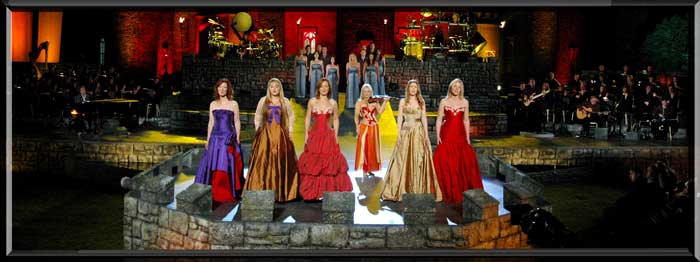
These speakers arrived just a couple of days after Linda and I attended a “Celtic Women” concert. If you’re not familiar, these are five young Irish women singers 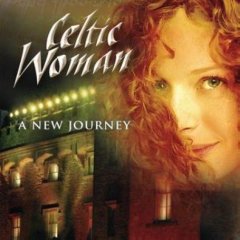 (plus an incredible violinist) who are classically trained but perform Irish tinged songs with contemporary orchestral and vocal arrangements. Individually they sing like angels – very accomplished angels. But they also sing in duets, trios and every ensemble imaginable. There are also a dozen or so males and females that make up a background chorus to go along with the lavish orchestrations which feature a lot of percussion – everything from wind chimes to huge bass drums that shook the arena. If you look closely at the upper rear of the picture, you can see the two large areas dedicated to percussion. Every song they performed was from the CD’s we own. The concert sound was simply the best I’d ever heard. Clean and clear with no distortion. It was like listening to an enormous state-of-the-art stereo. I made it a point to seek out the engineer and tell him so.
(plus an incredible violinist) who are classically trained but perform Irish tinged songs with contemporary orchestral and vocal arrangements. Individually they sing like angels – very accomplished angels. But they also sing in duets, trios and every ensemble imaginable. There are also a dozen or so males and females that make up a background chorus to go along with the lavish orchestrations which feature a lot of percussion – everything from wind chimes to huge bass drums that shook the arena. If you look closely at the upper rear of the picture, you can see the two large areas dedicated to percussion. Every song they performed was from the CD’s we own. The concert sound was simply the best I’d ever heard. Clean and clear with no distortion. It was like listening to an enormous state-of-the-art stereo. I made it a point to seek out the engineer and tell him so.
I had set the Vipers up while Linda was grocery shipping. When she came home and even before she entered the room, she said, “That sounds just like the Celtic Woman concert!”. The thing is, I wasn’t playing their CD. It was Steely Dan. What she meant was that the sound the Vipers were projecting resembled that of a live venue. Considering that “The Dan” is perhaps the most sterile, studio-type sound anywhere, that was quite an observation. When I asked Carl what his design goal for this specific speaker was, he started out by saying, “The Viper IA utilizes the minimum number of elements to provide the “live experience”. Hmm. “Live experience”. Linda didn’t know what Carl had said, but as usual she nailed the Viper's most obvious characteristic. I think it is safe to say, even at this early point, that Carl’s overall design has been met. But there’s more to story.
“Live experience” sounds simple, but a live experience for one person may mean something completely different to someone else. A live AC/DC stadium concert does not sound much like a string quartet in a small space. And, who’s to say that everyone wants “Aja” to sound like a live experience? There is something to be said for studio sound after all.
The Vipers have much in common with boxed speakers including their appearance, but they do sound different. The first thing you notice is their ginormous (yes that’s a real word) sound stage. It fills the back of the room. The word “back” here is significant. The Vipers, set up in an 11-foot triangle, did not project forward in my large room. Everything (like solo vocals) was either right between the speakers or extending back – way back – behind them. If you clicked the “Publisher’s Biases” link on our home page, you would have found that this is a style that I do not prefer. I like an image that projects soloists and other out-front performers, well, out it front of the speakers with everything else between and in back - assuming of course that was the way it was recorded. When I mix multitrack recordings, that’s what I shoot for. Some people consider this “in your face”, but I consider it to be realistic. I think if by some miracle Karen Carpenter materialized in my listening room, she would be standing in front of Richard who'd be in back of her playing his piano. In fact, in an adjacent room, I do have a 6' grand piano where many times I've accompanied a singer. The sound has never been "laid back" as some people prefer in their audio systems.

SNEAKY SNAKES
On the other hand, if the Berlin Philharmonic suddenly appeared, we'd all be crushed. Even "The Large Room" is not that big, which brings me to this observation; the Viper's have an uncanny ability to scale performances. A 100 piece orchestra somehow sounds perfectly natural in the listening room. So does a jazz trio. Pretty sneaky.
the Viper's have an uncanny ability to scale performances. A 100 piece orchestra somehow sounds perfectly natural in the listening room. So does a jazz trio. Pretty sneaky.
The Vipers were never harsh and did not offend me, my wife or several audiophile and "civilian" guests. No instrument or voice ever sounded as if were riding on a laser beam and the word "strident" is not in Carl's vocabulary. You can listen to the 1A's for hours on end, which Linda and I did many times. We have all seen some guy in a turban playing a flute while a huge cobra appears to be in a trance. With these reptiles, the opposite is true. They tend to mesmerize the listener.
While the image is not “forward”, there is a great deal of space between the front and the rear of the stage that sounds very natural. When there is not a front and center soloist, instruments and singers are laid out in very perceptible layers just as they should be. This is something not often heard in floorstanding speakers and sometimes not even in stand-mount monitors.
The image extends far beyond the left and right sides of the speakers without being fuzzy. In video and still photography, the image is always sharpest in the center with varying degrees of softer focus towards the extremes. Same in audio. The Vipers did an excellent job of staying in focus throughout the musical frontier. That’s about as common as re-sealable condom wrappers.
THE VIPER IA'S ON A MSSION
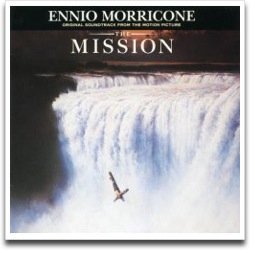 Instruments had a very high degree of realism as well, suggesting a reasonably flat frequency response. The oboe is one of my favorite instruments and one that, because it uses a double reed which generates rich harmonics, is difficult to accurately reproduce. The old joke goes like this: “What's the difference between an oboe and an onion?
No one cries when you chop up an oboe”. Lots of speakers butcher oboes. They can sound like everything from and English horn to a clarinet if not done right. Ennio Morricone uses a lot of oboe solos in his “The Mission” soundtrack. I’ve listened to it, or at least select cuts from it, a thousand times at least a never get tired of it. I took my LP copy (also available on CD and import SACD) over to staffer Al Helo’s home and he wouldn’t let me leave with it. Carl’s entry level speakers rendered the oboe faithfully and beautifully. A delight to which to listen. One of the cuts features a tympani intro where, if everything is correct, one can hear several things; the individual strikes within the rolls, the body of the big copper frame and the felt material character of the mallets. The baby snakes gave me all of that. Not the best I’ve ever heard, but it was all there. Better speakers let me hear it easier without listening for it at all. I have a feeling that Carl’s better speakers would do just that.
Instruments had a very high degree of realism as well, suggesting a reasonably flat frequency response. The oboe is one of my favorite instruments and one that, because it uses a double reed which generates rich harmonics, is difficult to accurately reproduce. The old joke goes like this: “What's the difference between an oboe and an onion?
No one cries when you chop up an oboe”. Lots of speakers butcher oboes. They can sound like everything from and English horn to a clarinet if not done right. Ennio Morricone uses a lot of oboe solos in his “The Mission” soundtrack. I’ve listened to it, or at least select cuts from it, a thousand times at least a never get tired of it. I took my LP copy (also available on CD and import SACD) over to staffer Al Helo’s home and he wouldn’t let me leave with it. Carl’s entry level speakers rendered the oboe faithfully and beautifully. A delight to which to listen. One of the cuts features a tympani intro where, if everything is correct, one can hear several things; the individual strikes within the rolls, the body of the big copper frame and the felt material character of the mallets. The baby snakes gave me all of that. Not the best I’ve ever heard, but it was all there. Better speakers let me hear it easier without listening for it at all. I have a feeling that Carl’s better speakers would do just that.
Speaking of his better speakers, when I asked him about compromises he (and all speaker designers) have to make when designing a lower priced speaker, 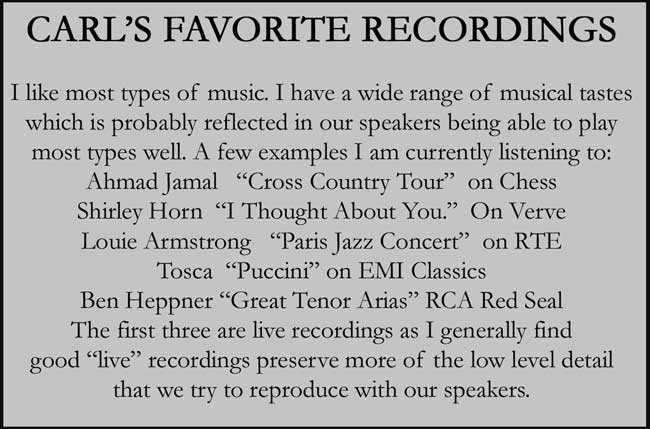 he replied, "Obviously budget constraints become serious limitations to the absolute performance level. What we do, at the price, is the best possible job with the middle frequencies. We tend then to compromise at the frequency extremes both in terms of bandwidth and dynamic range. So the Viper IA will not play as loud or as deep in the bass or as high at the top but will come very close in quality to our more elaborate models in the mid range where most of the music resides".
he replied, "Obviously budget constraints become serious limitations to the absolute performance level. What we do, at the price, is the best possible job with the middle frequencies. We tend then to compromise at the frequency extremes both in terms of bandwidth and dynamic range. So the Viper IA will not play as loud or as deep in the bass or as high at the top but will come very close in quality to our more elaborate models in the mid range where most of the music resides".
Very honest. No hype like, "I designed this $4,000 so well that I did not have to compromise the sound of our $200,000 speaker at all!". When Carl says the 1A's will not play as loud as his other models, I can't argue with that because I don't know how loud all his other speakers will play, but I can say these played plenty loud - a measured 100db peaks - with no apparent problem. Everything was clean and uncompressed.
As far as the high end goes, no one could call these speakers dull or lifeless at the top end. Was there as much sheen and sparkle at the very high extremes of the piano keyboard on heavily struck notes as I have ever hear? No. Did I miss it? No. The liveness and liveliness of the overall open baffle experience much outweighed any micro limitation.
As for dynamics, there was no obvious limitation there, either. Perhaps a 7.5 on a scale of 10. But again, the sneakiness of these speakers comes into play; they hypnotize you into not caring about the extremes because the glorious midrange and the magnificent soundstage seduce you into a immersive trance where you enter a world of music where nothing else matters. That's not hype, kids. After a long day at the office, I found myself anxious to get home and give myself over to these sneaky snakes. And maybe those rather hot Celtic Women.
For a $4,000 pair of speakers, that is way ahead of the curve. When things stayed mainly in the midrange plain, which is the vast majority of the music, the level of enjoyment was off the scale.
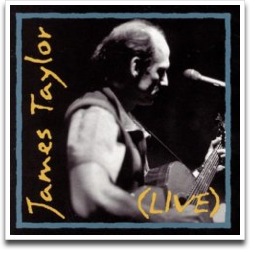
If studio recordings were made to sound more "alive", live concert recordings such as James Taylor’s 2-CD "Live" set (Columbia C2K 47056) were so uncanny it was spooky. This is one of the best live pop recordings I've heard and the Vipers just added another dimension of reality to it.

Same with “Friday Night Live in San Francisco” by the three guitar greats, McLaughlin, DeLucia and DiMeola. There was a lot of musical magic taking place on that stage and the Vipers brought it all to life. This SACD is a great one to test speed and rhythm as the blistering Flamenco style riffs these guys tear off are astounding. There is also a very palpable, electric sense of the three artist's camaraderie, connection and competition that permeates the performance. A lesser system can bury that altogether. The Vipers reveled in it and matched the flying fingers note for note and captured the not only the sparkling strings but the spirit as well.
THE BASS CASE
Perhaps the biggest compliment I can pay the IA’s is that I often forgot I was listening to a stereo system. Often, but not always. When I played music that had a great 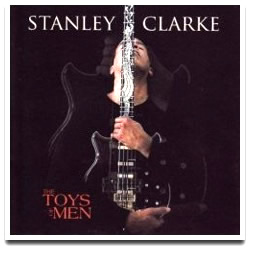 deal of low-end energy, I was sometimes gently reminded that this was recorded music. An example would be Stanley Clarke’s latest “The Toys of Men” on the Heads Up label. If that artist doesn’t ring a bell, Clarke is a (mainly electric) bassist who has played with everyone from Horace Silver, Art Blakey, Dexter Gordon, Joe Henderson, Pharaoh Saunders, Gil Evans, Stan Getz and more. He rocketed to fame when Chick Corea (if you don’t know that name, then…never mind) recruited him for his new jazz-fusion band “Return to Forever”. Remind me sometime to tell you about the night I ran into the whole band – one of the most humiliating experiences of my life. Needless to say, this recording is awash in very close up, ultra low frequencies. Clark often tunes his basses lower than normal and/or uses 5 or 6 stringed instruments to get his subterranean tracks. You will often hear subsonic-type bass lines on the bottom while he solos an octave or two above them – a challenge for any transducer.
deal of low-end energy, I was sometimes gently reminded that this was recorded music. An example would be Stanley Clarke’s latest “The Toys of Men” on the Heads Up label. If that artist doesn’t ring a bell, Clarke is a (mainly electric) bassist who has played with everyone from Horace Silver, Art Blakey, Dexter Gordon, Joe Henderson, Pharaoh Saunders, Gil Evans, Stan Getz and more. He rocketed to fame when Chick Corea (if you don’t know that name, then…never mind) recruited him for his new jazz-fusion band “Return to Forever”. Remind me sometime to tell you about the night I ran into the whole band – one of the most humiliating experiences of my life. Needless to say, this recording is awash in very close up, ultra low frequencies. Clark often tunes his basses lower than normal and/or uses 5 or 6 stringed instruments to get his subterranean tracks. You will often hear subsonic-type bass lines on the bottom while he solos an octave or two above them – a challenge for any transducer.
Bass was the only area that, if I had to nitpick a little, would be worth mentioning - thought it's much more of a nit than a pick. And that nit only showed up in very few specific instances - namely recordings with a close mic'd, up front bass. It is not that there is a lack of reasonable bottom end, there is definitely no lack. And it is not that it is not tuneful, true to pitch, solid and well defined. It is. It is just that sometimes I sensed that there was a discontinuity of low end in relation to the rest of the spectrum on certain recordings. I'm not sure if it was an issue of speed or timbre, but It showed up using several different solid state and tube amps, integrateds and so on. It was not because of placement because I tried several different variations. Other listeners noticed it, too. I have heard other Nola speakers at various shows and never detected a hint of this, so I suspect it might be limited to this model. I repeat that is not an all-the time thing and it is far from obvious. On orchestral and other music where low frequencies such as bass viols, drums, tympani and the like were further toward the rear, everything was fine. 
By the way, did you ever wonder why such things are called "nitpicks?" I think it's because when we find something that might be a small nit, we pick at it like a week old scab. "Hmmm...is that a little something I might have heard in the low end? Wa-hell! Let's just pull out every single electric or acoustic bass recording we own and throw it at the sucker so we can reeeeealy hear it!" I think most people would not even notice. Linda never mentioned it, but my long time audiophile friend did. He travels internationally a lot (he's a native of Italy) and when he's in town, we always have him over. His name is Mario and long ago I started calling him Stereo Mario. And yes, I think that was at least partly one of the reasons I came up with the name StereoMojo. So if you don't like the name, blame him!


One unique aspect of Stereomojo is that when we hear something that we think might not be performing as it should, we let the provider know it. Perhaps there’s a malfunction or shipping damage, less than optimal setup or room placement or who knows what. So I mentioned my observation to Carl. He told me that was not normal. As a remedy, he sent me a pair of special speaker isolation stands that he sells for $900/pair. The spikes that attach to the bottom of the Vipers are removed, that platforms have their own. Four ball bearings are placed in channels as you can see. The speakers are then placed atop them.
Carl implements these devices in his upper range speakers as standard equipment.
The bass did improve, but so did everything else. There was even more clarity and a bit more transparency throughout the frequency bands. More definition. It never ceases to amaze me how increased isolation from all sources improves the performance of audio gear, especially digital players but also amps and speakers. The Stillpoints ESS equipment rack I have is indispensable once I heard what it can do to a system.

THE WAF
"I like the look of these", says Linda. "The piano-grade lacquer finish is lovely and the contrasting black lacquer inserts accent the French curve at the top. They do have a certain antique look about them, though".
"More than how they look, I particularly like the way they sound. They sound more realistic in a live music sense than I am used to. Sitting almost in front of the right speaker, I can hear the whole performance in stereo. I hear the musicians on the left and in the center perfectly, and the ones in back, too. That's a big plus for me since you hog the center, James! Just kidding, but sitting off center with these does not detract from the performance".

As mentioned earlier, this was my first in-home evaluation of an open baffle speaker. Browsing various audio net sites reveals that there is a large segment that swear that open baffle is the only way to listen to music. Now I hear why. It is a very different and unique experience. If you re one of those who thinks that there is just something missing from your system, a certain Mojo that limits the sense of "aliveness", it is highly recommended that you try an open baffle design, and Nola is a primo place to start. I don't know why there are not more companies making OB's, maybe because they have not heard what they can do either.
I used both tube and solid state amps and found that both work very well with the Viper IA's. The sensitivity rating is 86dB, but sensitivity ratings are notoriously inaacurate. They sound more efficient than that. Carl recommends at least 10 wpc. To take advantage of their well above average dynamics, you'd probably want more like 60, particularly if they live in a larger room. You don't have to have expensive amps to hear the Viper magic, but the better juice you feed them, the better they uncoil.
Since these speakers were specifically designed to be bi-wired, they should be impelemented as such. Nola also has their own line of cables if you need them.
Would I buy these speakers? Well, I did send them back, but only because Carl has promised to send me one of his better models which I am very eager to hear. Would I recommend them to a friend? I would absolutely recommend that they audition an open baffle before they buy anything else, just as I suggest to you. Our Clark Hertz still owns and loves his Viper Reference's he reviewed almost a year ago.
Will everyone like the sound of the Nola's? Of course not, but not everyone likes chocolate, either. If you've never tasted chocolate, I would say you are deprived of a great experience. If you haven't tried a Nola, I'd say the same.
Because of the unique experience the Nola Viper IA offers at a rather entry level $4,000 price, and because of the overall quality of design, finish and fine attention to detail by the designer, we bestow our top award to them and designer Carl Marchisotto.

Link To Our Review of the Nola Viper Reference